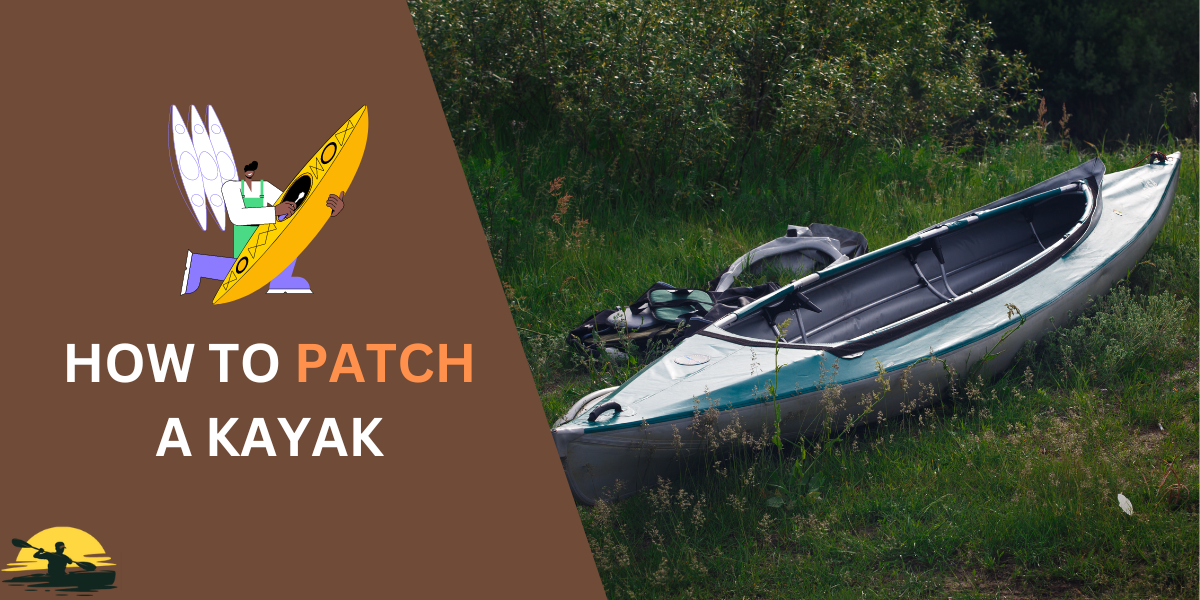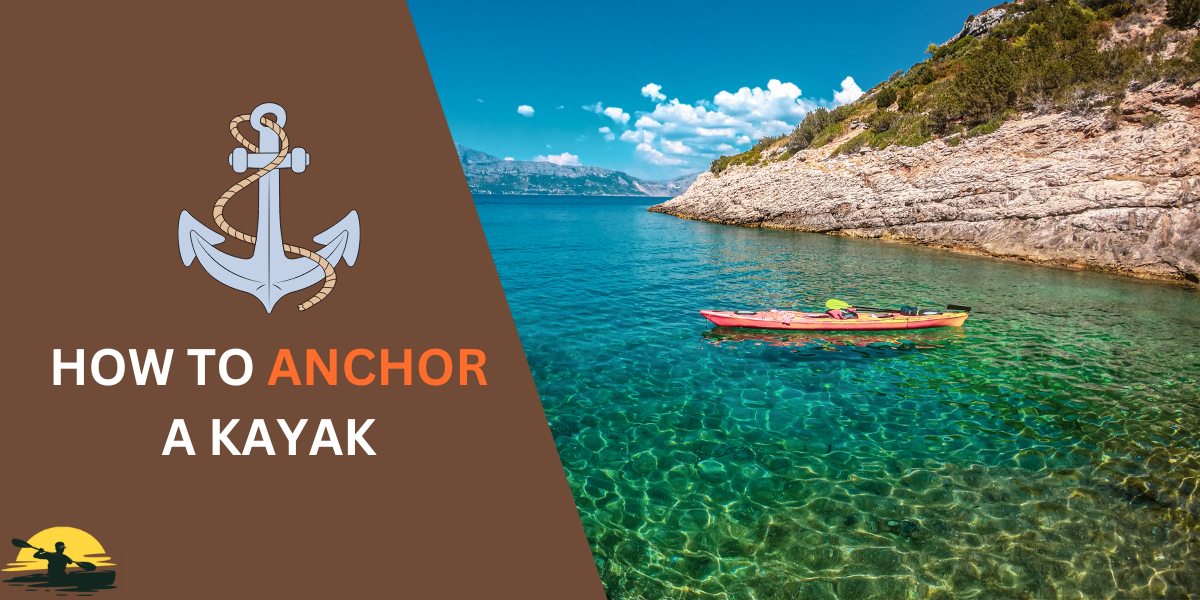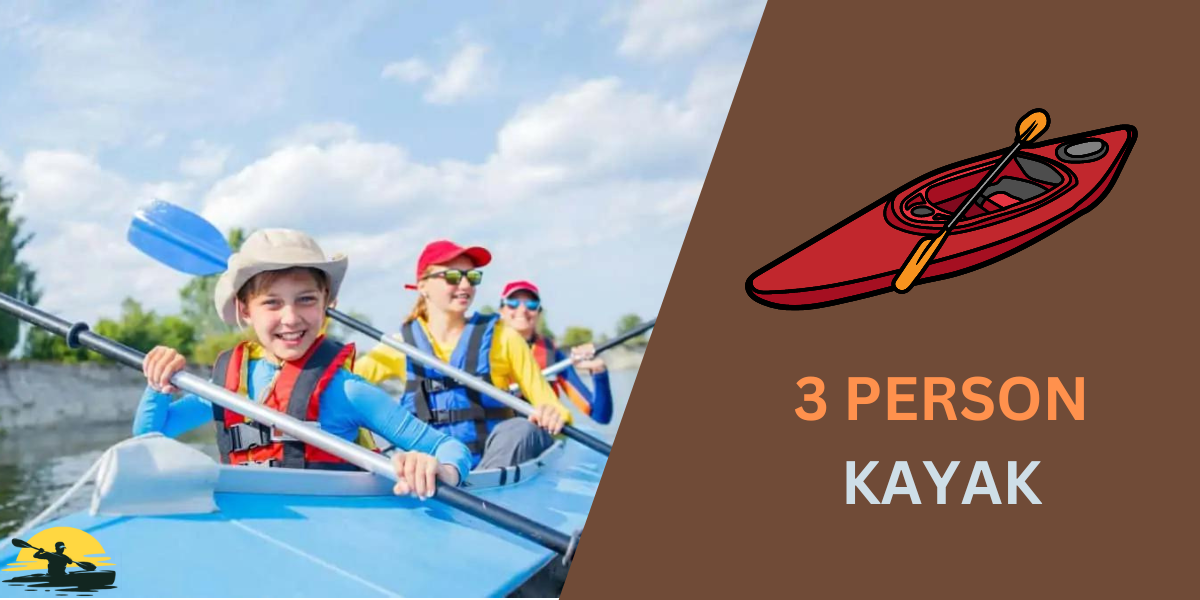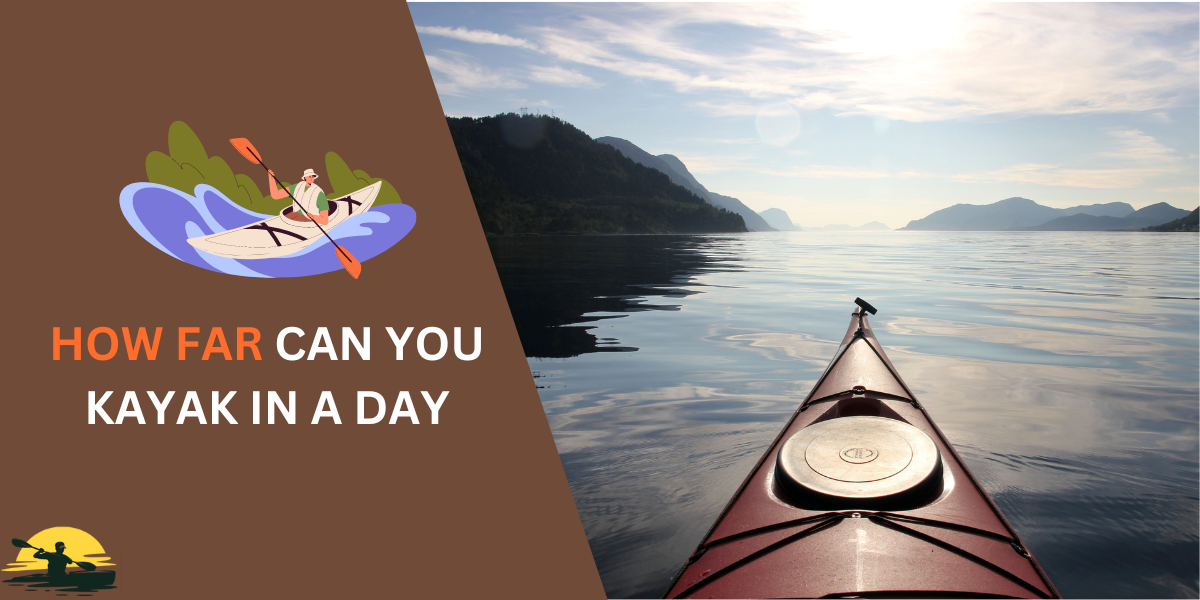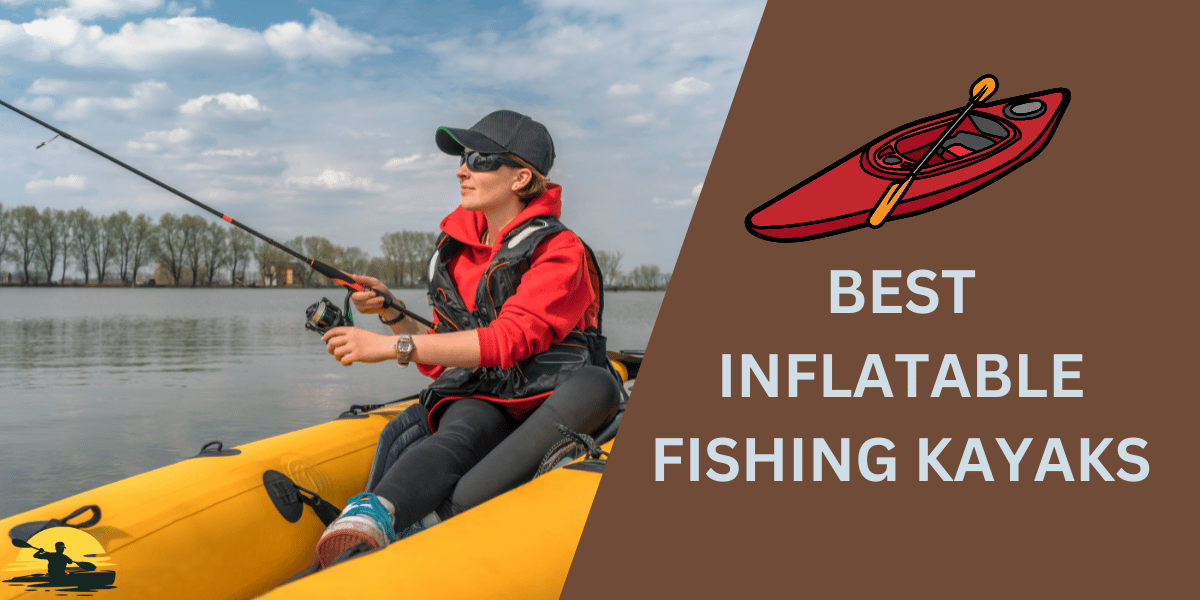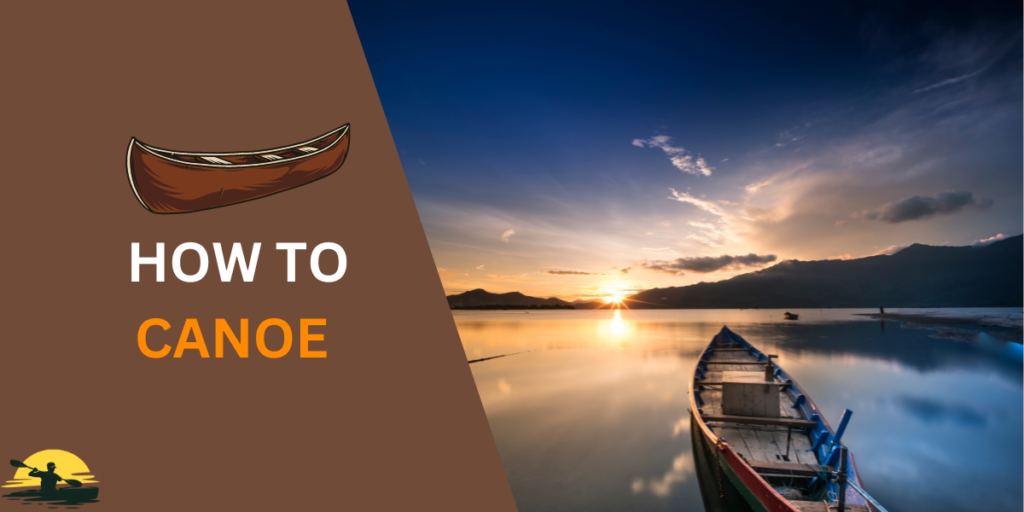
Have you ever wanted to try canoeing?
Canoeing, with its serene gliding across the water, may seem like a skill reserved for the experts. But it’s a lot easier to learn than you might think.
This guide will teach you the basics—choosing gear, paddling straight, and even what to do if you tip over (it happens to everyone!).
Soon, you’ll be ready to grab a canoe paddle and explore.
Canoeing is easier than it looks!
- Gear Up: Choose the right canoe for your needs (beginners want stable ones). Get a paddle, a lifejacket (wear it!), and a whistle.
- Master the Stroke: The forward stroke is your key to moving. Practice on land first for the right body twist and reach.
- Get In & Out: Do it carefully, especially from shore, to avoid tipping.
- Stay Steady: Keep your weight low and in the center of the canoe. Teamwork is key if you’re paddling with someone else.
- Choose Calm Waters: Lakes and slow rivers are perfect for starting. Avoid wind and currents, and know the weather forecast.
Remember, practice makes perfect! Even a quick trip is a win as you learn.
Canoe Basics – Your Tools for Success
Before hitting the water, let’s get familiar with your gear:
- The Canoe: It’s like a long, skinny boat. The pointy front is the “bow,” and the back is the “stern.” You sit on seats inside. Knowing this helps when we talk about paddling!
- Canoe Types: There are many kinds. For beginners, look for wider, shorter ones—they’re more stable. Some canoes are for one person (paddling solo), while others fit two (tandem).
- The Paddle: It has a handle, a long part (the shaft), and a wide, flat part (the paddle blade). That’s what goes in the water to push you along.
- Safety Stuff: Always wear a lifejacket (also called a PFD). Canoes can tip, even with an experienced paddler! Also, bring a whistle to signal if you need help.
Let’s Talk Paddling
- Forward Stroke: This is how you move the canoe straight. There’s a right way to hold the paddle and twist your body – we’ll cover that in the next section!
- Steering: If you paddle on just one side of the canoe, it goes in circles. In tandem canoes, the stern paddler usually steers while the bow paddler keeps a steady pace. We’ll cover special strokes for steering later.
- Advanced Stuff: You can paddle backward, paddle sideways to get close to a dock, and even paddle upstream! But for your first canoe trip, let’s master going forward in a straight line. A few strokes at a time is all it takes to get the hang of it.

Extra for Two-Person Canoes
- Communication is Key: Both paddlers need to work together. Talk about when to switch sides, go faster, or slow down.
- Stay Parallel: If one person paddles super hard and the other barely at all, the canoe goes wonky. Try to match each other’s efforts.
- Keep it Steady: Getting in and out can be tricky. Help your partner balance so nobody gets a surprise swim! The person getting in or out should move slowly and stay low in the boat. Hold onto the opposite side for extra stability!
Mastering the Strokes
Think of your body like a motor for the canoe.
The way you move + your paddle become the engine to control where you go!
Let’s break down the main strokes:
The Mighty Forward Stroke
- Grip: One hand on top of the paddle, the other a bit down the shaft.
- Body Power: Reach forward, dipping the blade in the water near your toes. Now, could you twist your body, pulling the blade back alongside the canoe? It’s NOT just your arms doing the work!
- Release: When the paddle’s by your hip, lift it out cleanly. Switch hands and repeat on the other side.
Steering Strokes (for tandem canoes)
- J-stroke: Stern paddler only! It looks like a backward “J.” It’s your main way to keep the canoe going straight. We’ll have a video for this one!
Bonus Strokes (try these later!)
- Draw Stroke: Pulls the canoe sideways, great for getting close to shore.
- Pry: Like the draw, but with a twist, for fancier turning.

Solo Canoeing Tip: You’ll do ALL the strokes in the middle of the canoe. Switching sides a lot keeps it balanced.
Practice Makes Perfect
Start on land! Sit on a chair, pretend it’s your canoe seat, and mimic the strokes. It sounds silly, but it helps build muscle memory.
Uh-Oh! What if I Tip?
Even the best paddlers go for an unexpected swim sometimes. Don’t panic! Most canoes float even when upside down. Your lifejacket keeps you safe while you get back in.
We’ll cover what to do step-by-step a bit later.
Getting in and Out (Gracefully!)
Embarking on your canoe adventure starts on land (or sometimes a dock). Let’s make it smooth sailing!
Shoreline Launch
- Secure the Canoe: The front of the canoe should be a little in the water, the back on land. This keeps it steady for you to get in.
- Bow Paddler First: If two people are in the canoe, the bow paddler gets in, sits in the bow seat, and holds the sides of the canoe for balance.
- Stern Paddler’s Turn: Carefully step in, staying low near the center of the canoe. Once sitting, grab a paddle and get ready!
- Pushoff Power: The stern paddler gives a gentle push off the shore with their hands or a few paddle strokes. Now you’re on the water!
Dock Launch
- Canoe Parallel: The canoe should be alongside the dock. One person holds it steady.
- Careful Steps: Enter just like from the shore, staying low and centered.
Returning & Exiting
- Aim for Shore: Gently paddle to a calm spot.
- Secure it: The bow paddler might grab some grass, or the stern paddler can give a little push onto the land to stop the canoe from moving.
- Reverse Order: The stern paddler gets out first, helping steady the canoe for the bow paddler.
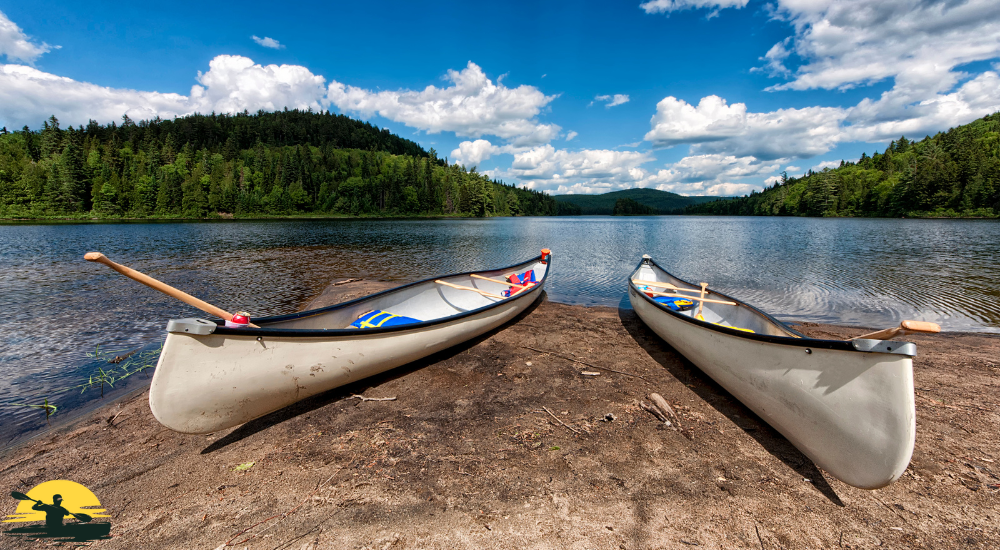
Tipping Happens!
Everyone takes a swim at some point. Stay calm, your lifejacket keeps you safe, and here’s the plan:
- Grab the canoe: Even capsized, it usually floats.
- Swim it to shore: Work together if you can.
- Flip it, drain it, try again! We’ll have a video showing exactly how.
On the Water – Tips for Triumph
You’ve got the gear; you know the strokes; now it’s time to make magic happen out there.
Here’s how to handle your canoe like a pro:
Staying Balanced
- Low and Centered: Think of the canoe like a seesaw. Keep your weight low and in the middle for the most stability. There is less chance of tipping!
- Body Control: When you paddle, your upper body twists with each stroke. Try to avoid leaning too far to one side. A narrower paddle stroke keeps things steady.
Teamwork in a Tandem Canoe
- Talk it Out: Say when you’re tired or need to switch sides. Paddling on opposite sides helps the canoe go straight.
- Rhythm is Key: Try to match each other’s pace. Those uneven paddle strokes make the canoe tipsy.
Reading the Water
- Calm is King: Especially for beginners, look for flat water. Waves and fast currents are trickier.
- Spotting Trouble: Learn to recognize rocks, shallows (you’ll feel your canoe scrape!), and even logs hiding underwater. Those can cause surprises!
- Windy Days: Wind makes you work harder. On your first few trips, try to paddle forward when it’s calmer, especially if you’re a solo paddler.
Weather Matters
- Check the Forecast: Don’t head out if thunderstorms are coming. Sudden wind or rain can be dangerous.
- Dress Right: Even on warm days, the water can be cold. If you get wet, you want to be prepared.
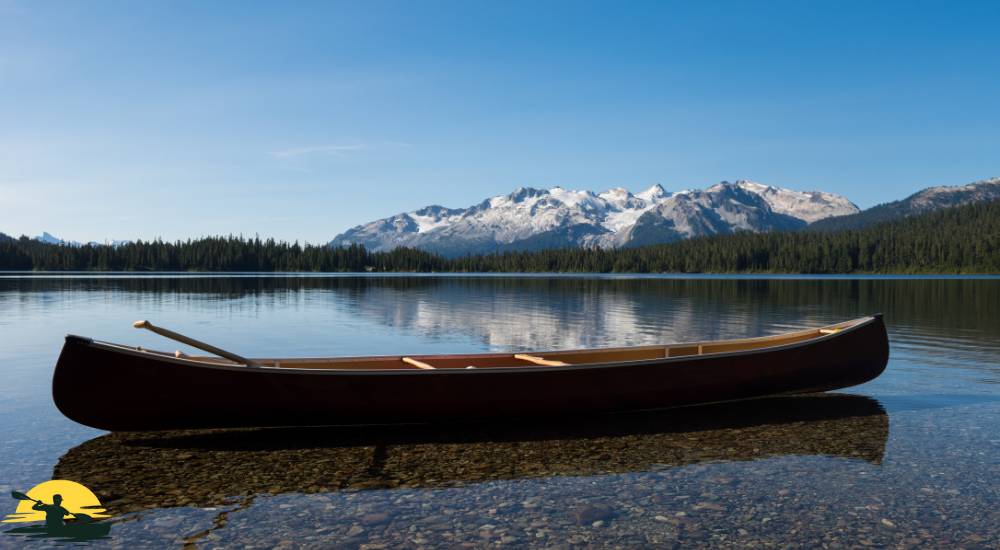
Bonus Tip:
If you want to get really close to something on one side of the canoe, try this: both paddlers do a standard forward stroke on the same side.
It nudges your canoe in that direction.
It’s handy for seeing those turtles sunning by the shore! But remember, switch back to opposite sides for normal paddling, or you’ll go in circles.
Where to Paddle? Finding Your Ideal Spot
You’re ready to adventure, but where to go?
Here’s how to find the best beginner-friendly canoe spots:
Types of Places to Paddle
- Lakes: Great for getting started. Look for smaller ones with calmer water.
- Slow-moving rivers: Choose sections with little current. You don’t want to fight your way upstream!
- Creeks: These can be beautiful, but check the water level; if it’s too low, you’ll be scraping bottom and getting stuck.
How to Find Them
- Park Websites: Most parks with lakes or rivers list activities. They often mention whether the lake or river is good for canoeing.
- Ask Around: Outdoor stores, even schools with outdoor clubs, might have great recommendations.
- Online Resources: Search for things like “beginner canoeing spots near [your city]” or check out canoe-specific forums.
Leave No Trace
Canoeing is about enjoying nature, so let’s keep it beautiful!
- Pack it Out: Whatever you bring with you, take it back home. No trash left behind!
- Stay on Trails: At launch spots, only walk on marked paths. It protects plants and wildlife.
- Be Considerate: Give other paddlers space and keep the noise down so everyone can enjoy the peacefulness of being outdoors.
Conclusion
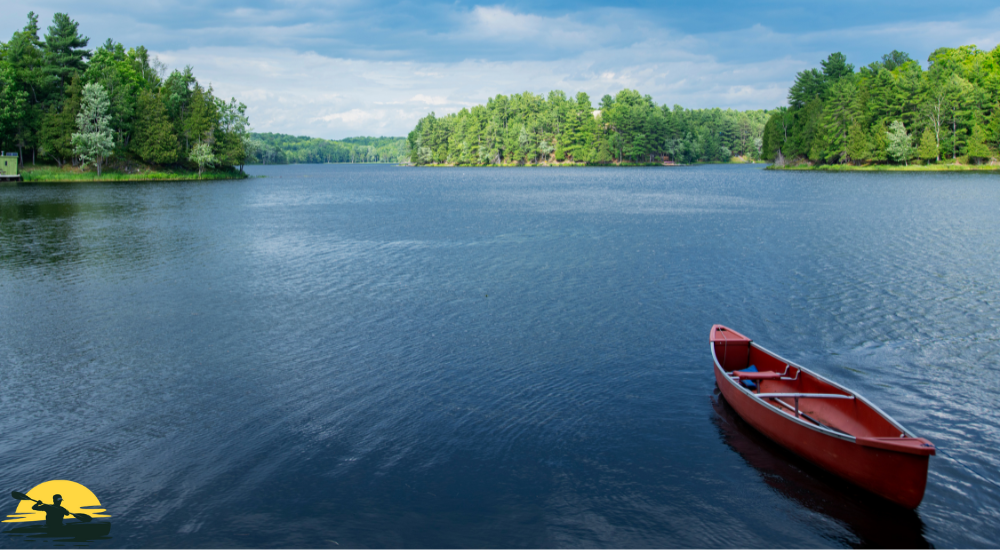
Canoeing is a fantastic way to get outside, try something new, and have a ton of fun.
It looks tricky, but remember, everyone starts as a beginner! Use the tips in this guide, practice a little, and soon you’ll be gliding smoothly across the water.
The sense of accomplishment is amazing! Don’t be afraid of a few wobbles, even the occasional unexpected swim (wear that life jacket!).
It’s all part of the learning process. The more you go out there, the better you’ll get.
Frequently Asked Questions
Can I teach myself how to canoe?
Absolutely! This guide gives you all the basics. Start on calm water and practice those strokes. Online videos can also help visualize the correct paddling technique.
Is it hard to get back into a capsized canoe?
It can be a bit tricky, but most canoes are designed to float even when flipped. Practice makes perfect! If possible, take your first trip with a more experienced paddler who can show you the ropes.
What’s the best way to steer a canoe?
For a two-person canoe, the person in the stern seat does most of the steering. Practice the J-stroke and experiment! Communication with the bowperson is key.
What happens if the wind picks up while I’m canoeing?
Head for shore! If you’re confident paddling in it, angle your canoe slightly into the wind to help stay on course. Always watch the weather before your canoeing adventure.
How do you sit in a canoe?
Most canoe seats are raised. Experiment with kneeling (one leg back) or sitting (one foot forward, the other bent). Comfort is key! Pads are popular for kneelers. In tandem canoes, the bow paddler sometimes sits backward for legroom (paddle opposite side, pull back, adjust based on boat movement).


